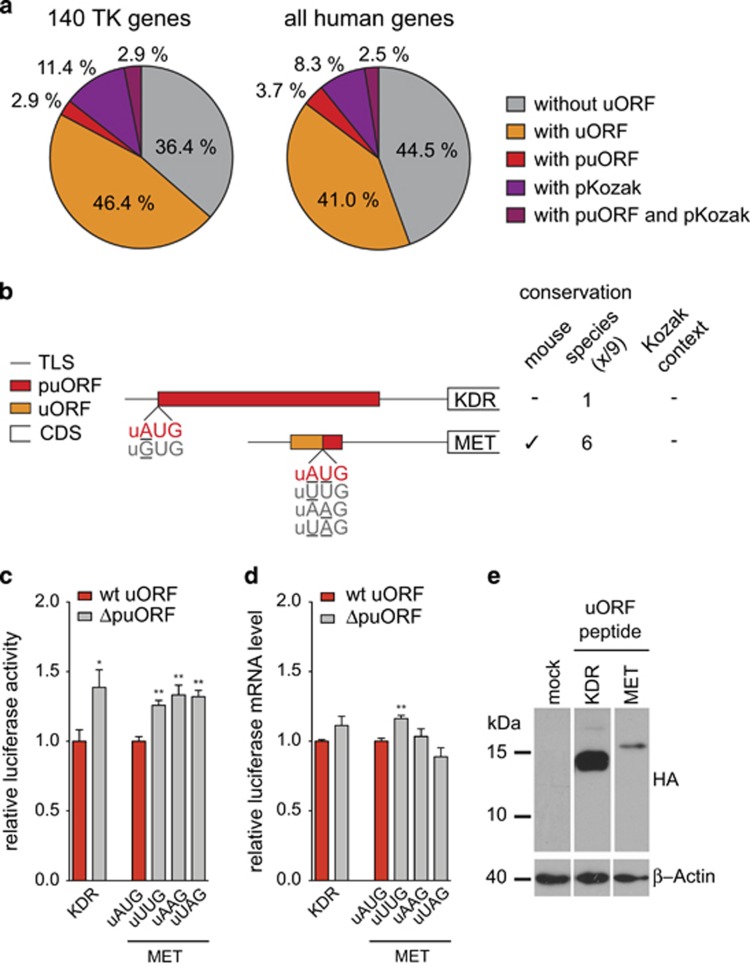Figure 4.
Polymorphic uORFs affect TK translation. (a) Pie charts indicating the fraction of TK genes and all human genes with SNPs in uORF start codons (puORF) and/or corresponding Kozak sequence contexts (pKozak). SNPs were analyzed for all RefSeq-annotated transcript variants of TKs and the whole human genome using dbSNP 137.25 (b) Schematic representation of the position and length of a uORF and puORFs within the TLSs of KDR and MET. SNPs that disrupt the uORF initiation codon are underlined and the resulting alternative codons are displayed in gray. Conservation of the uAUG among human and mouse (check mark) and among a total of nine vertebrate species is depicted. The weak quality of the Kozak context (−, no core Kozak base matches) is indicated. (c) Bar graph representing the relative luciferase activity in the presence of the wt puORF and the ΔpuORF containing TLSs of indicated TKs. For the two MET SNPs, all three possible SNP combinations were analyzed. (d) Bar graph indicating the relative luciferase mRNA levels of wt puORF and ΔpuORF reporter constructs for indicated TLSs. Error bars represent the s.e.m. of at least three independent experiments. Asterisks indicate statistical significance (**P<0.01 and *P<0.05). (e) Immunoblot shows HA-tagged peptides translated from KDR and MET uORFs. The TLSs of KDR and MET including the cap-to-uORF sequence, the uORF-coding sequences (with a disrupted uStop codon) and a C-terminally added triple HA-tag (Supplementary Table 4) were cloned into the pcDNA3 vector (Invitrogen). HEK293 cells were transfected following standard protocols and protein lysates were separated 42 h later on 18% SDS–polyacrylamide gels. After transfer, polyvinylidene fluoride membranes (Roth) were probed with specific antibodies: HA (HA.11, Covance) and β-Actin (Clone AC-15, Sigma-Aldrich) and horseradish peroxidase-linked secondary antibody (GE Healthcare Life Sciences).

